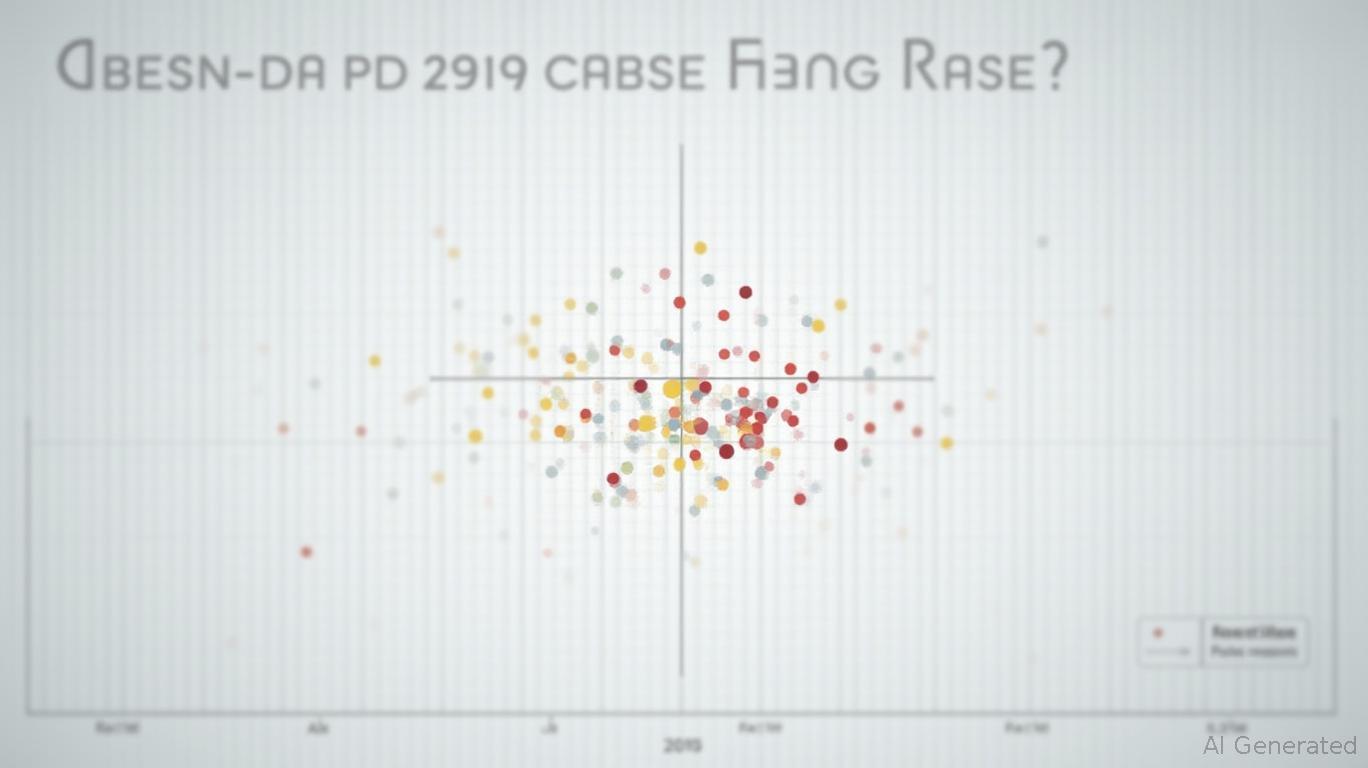Beyond the Dots: Why Data, Not the Fed's Dot Plot, Should Guide Your Strategy Now
The Federal Reserve's June 2025 FOMC meeting underscored a critical truth for investors: the Fed's “dot plot” of federal funds rate projections is increasingly less reliable as a standalone guide to monetary policy. While the median projection for year-end 2025 rates held steady at 3.9%, the broader economic outlook—shaped by tariff-driven uncertainty, divergent inflation risks, and uneven growth—suggests that markets should focus less on the Fed's theoretical path and more on real-time data to navigate this volatile environment. Here's why the dots are distractions, and what investors should do instead.
The Dot Plot's Flaws: A Map Without Coordinates
The June dot plot reveals stark disagreement among Fed officials. For 2025, projections range from 3.6% to 4.4%, with no clear consensus (see below). This dispersion reflects not just differing economic views, but also the Fed's struggle to quantify risks like tariffs, which have deteriorated business confidence while keeping unemployment low.

History shows that these projections are often revised. In March 2025, the median 2025 rate was also 3.9%, but GDP growth estimates were far rosier (1.7% vs. the June downgrade to 1.4%). Investors who clung to the March dots would have misread the Fed's growing caution about tariffs and inflation. This time, the Fed's own language—repeatedly emphasizing data dependence—should be the North Star.
Follow the Data, Not the Dots: Four Key Metrics to Watch
Inflation's Split Personality
Core PCE inflation is now projected to hit 3.1% in 2025 (up from 2.8% in March), but the Fed sees it moderating to 2.1% by 2027. The critical question: Will tariffs reaccelerate price pressures? Monitor monthly inflation reports, particularly services inflation, which remains stubbornly high.Labor Market Resilience
Unemployment is expected to edge up to 4.5% in 2025, but a strong labor market could keep wage growth elevated. Watch weekly jobless claims and ADP employment reports for early signs of a slowdown—or surprises.Tariff Trajectories
The Fed explicitly cites tariffs as a key uncertainty. Investors should track trade policy developments and their impact on consumer and business surveys. A sudden escalation could force the Fed to raise rates; a rollback might allow cuts sooner.Market-Based Signals
The bond market's inflation expectations (e.g., 5-year breakevens) and the yield curve's slope offer real-time clues about investors' outlook. A flattening curve or rising breakevens could signal the Fed is too dovish—or too hawkish—for comfort.
Building a Data-Driven Portfolio
Ignoring the dots doesn't mean ignoring the Fed. Instead, investors should construct portfolios that thrive in a low-growth, volatile world where the Fed's next move is unclear. Here's how:
1. Dividend Champions Over Rate-Sensitive Plays
With rates likely to stay elevated, focus on high-quality dividend stocks that offer income and stability. Utilities (e.g., NextEra Energy) and consumer staples (e.g., Procter & Gamble) have historically outperformed in slow-growth environments.
2. Municipal Bonds for Tax Efficiency
The Fed's projections assume a restrictive policy stance until 2027. Municipal bonds, especially those with tariff-insulated credit profiles, offer tax-free yields. Look for munis yielding 5–6% (or higher for top earners) in sectors like healthcare or transportation infrastructure.
3. Preferred Securities for Steady Income
Preferred stocks, particularly from banks and insurers with strong capital ratios, provide floating-rate dividends that adjust with Fed policy. This mitigates duration risk if rates do dip sooner than the dots suggest.
4. Cash and Short-Term Instruments
Keep 10–15% of your portfolio in cash or Treasury bills. This liquidity allows you to pounce on dips in risk assets if the Fed signals a surprise pivot—up or down.
The Bottom Line: Data > Dots
The Fed's June meeting made one thing clear: its path is contingent on how the economy behaves, not how participants think it might behave. Investors who fixate on the dot plot risk missing the real story—whether inflation is cooling, the labor market is softening, or tariffs are reshaping growth.
The next FOMC meeting in July will be critical. If inflation surprises to the upside, the Fed's “patience” could turn into a pause-and-hold stance. If jobless claims spike, the dots may shift again. Stay agile, focus on the data, and prioritize resilience over speculation.
In this era of Fed uncertainty, the best strategy isn't to predict the Fed—it's to outmaneuver it by staying ahead of the data.

Comments
No comments yet